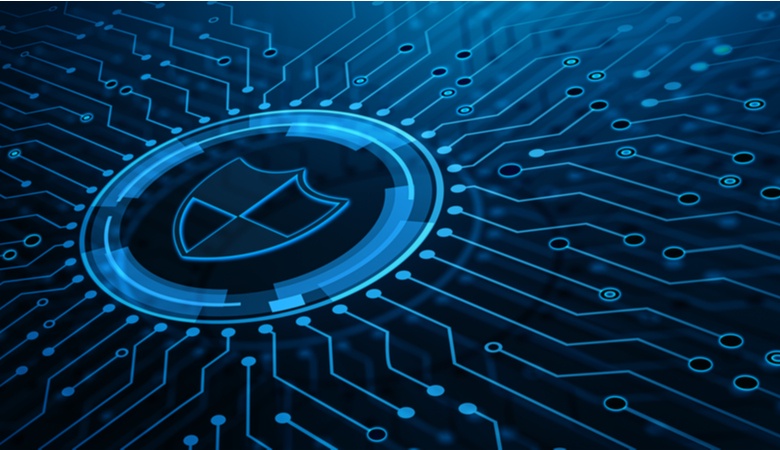Network security is the bedrock of a safe and efficient digital environment. In an era where information is currency, safeguarding networks from malicious actors is paramount. Let's delve into the intricacies of network security and how individuals and businesses can fortify their digital perimeters.
Introduction
In simple terms, network security involves implementing measures to protect data integrity, confidentiality, and accessibility within a computer network. As we navigate the interconnected landscape of the internet, the significance of robust network security cannot be overstated.
Types of Network Security
Physical Security
Physical security forms the foundation of network protection. This includes securing servers, routers, and other hardware to prevent unauthorized access or tampering. A well-protected physical environment sets the stage for comprehensive network security.
Cybersecurity
In the digital realm, Cybersecurity takes center stage. It encompasses various strategies and tools to shield networks from cyber threats. Let's explore two crucial aspects of cybersecurity: firewall protection and antivirus measures.
Firewall Protection
Firewalls act as digital sentinels, monitoring and controlling incoming and outgoing network traffic based on predetermined security rules. Implementing a robust firewall is the first line of defense against external threats.
Antivirus Measures
Malicious software, or malware, poses a significant threat to network security. Antivirus programs play a crucial role in detecting and eliminating these threats, ensuring the network's overall health.
Common Network Threats
Malware Attacks
Malware, a collective term for malicious software, includes viruses, worms, and ransomware. These constantly threaten network security, emphasizing the need for robust antivirus measures.
Phishing Attempts
Phishing involves tricking individuals into revealing sensitive information. Recognizing and avoiding phishing attempts is a critical skill in maintaining network security.
DDoS Attacks
Distributed Denial of Service (DDoS) attacks aim to overwhelm a network, rendering it inaccessible. Implementing measures to mitigate the impact of DDoS attacks is essential for network resilience.
Components of a Secure Network
Encryption
Encryption involves encoding data to make it unreadable without the proper decryption key. Implementing encryption measures safeguards sensitive information during transmission, adding an extra layer of security.
Authentication Measures
Ensuring that only authorized individuals can access the network is vital. Multi-factor authentication and biometric measures enhance the authentication process.
Regular Software Updates
Keeping software up-to-date is crucial for addressing vulnerabilities. Regular updates patch security flaws, reducing the risk of exploitation by cyber threats.
Building a Robust Password Policy
Complexity Guidelines
Creating complex passwords is a fundamental aspect of network security. Guidelines promoting using a combination of letters, numbers, and symbols enhance password strength.
Regular Password Changes
Regularly changing passwords reduces the risk of unauthorized access. Establishing a policy that encourages or enforces periodic password changes enhances overall network security.
Importance of Employee Training
Recognizing Social Engineering
Social engineering tactics often target individuals to gain unauthorized access. Training employees to recognize and resist social engineering attempts is crucial for maintaining network security.
Reporting Suspicious Activities
Encouraging a culture of reporting suspicious activities ensures that potential security threats are addressed promptly. Employee vigilance is a powerful asset in the realm of network security.
Securing Wireless Networks
WPA3 Encryption
Implementing WPA3 encryption for Wi-Fi networks enhances the security of wireless connections. This advanced encryption protocol provides stronger protection against unauthorized access.
MAC Address Filtering
Restricting access based on MAC addresses adds an extra layer of security to wireless networks. Only devices with authorized MAC addresses can connect to the network.
Network Security Best Practices for Businesses
Regular Audits
Conducting regular security audits helps identify vulnerabilities and weaknesses in the network. Promptly addressing these issues strengthens overall network security.
Incident Response Plans
A well-defined incident response plan is crucial for minimizing the impact of security breaches. Knowing how to respond effectively during an incident is key to network security.
Future Trends in Network Security
AI and Machine Learning Integration
Integrating artificial intelligence and machine learning in network security is on the horizon. These technologies offer proactive threat detection and response capabilities, enhancing network resilience.
Quantum Computing Challenges
As quantum computing advances, it poses challenges to traditional encryption methods. The future of network security involves developing quantum-resistant encryption to counter this emerging threat.
Challenges in Network Security
Evolving Threat Landscape
The landscape of cyber threats is dynamic, with new challenges emerging regularly. Staying ahead of evolving threats requires continuous adaptation and proactive security measures.
Balancing Security and Accessibility
Achieving a balance between robust security measures and the need for accessible networks is an ongoing challenge. Striking this balance ensures that security measures do not hinder usability.
Conclusion
In conclusion, network security is not a one-time task but an ongoing process of adaptation and vigilance. Implementing a multi-faceted approach, incorporating physical and cybersecurity measures, is crucial in safeguarding digital assets. Understanding and prioritizing network security is paramount for individuals and businesses as we navigate the digital age.
FAQs
What is the primary purpose of network security?
The primary purpose of network security is to protect data integrity, confidentiality, and accessibility within a computer network.
How does encryption contribute to network security?
Encryption encodes data, making it unreadable without the proper decryption key, adding an extra layer of security to safeguard sensitive information.
Why is employee training crucial for network security?
Employee training is crucial for recognizing and resisting social engineering attempts, contributing to overall network security.
What are the future trends in network security?
Future trends include the integration of AI and machine learning for proactive threat detection and addressing challenges posed by quantum computing.
How can businesses balance security and accessibility in network security?
Businesses can achieve this balance by implementing security measures while ensuring usability is not compromised, addressing the challenge of balancing security and accessibility.


No comments yet